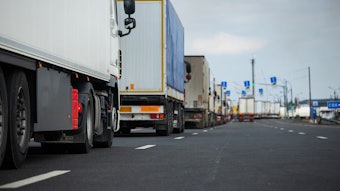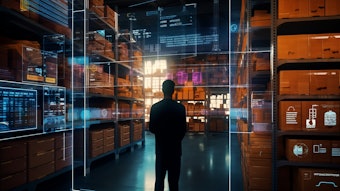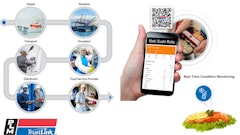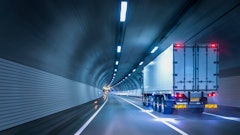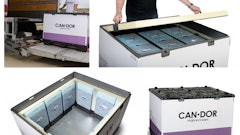
Emerging technologies are reshaping the future of supply chain. It’s these disruptive technologies that are altering the way organizations do business. They’re creating alternative means of connecting data, providing visibility, enforcing safety and more.
Food Logistics talks exclusively with Owen Nicholson, CEO, Slamcore, about why efficiency equals profitability in the cold food chain.
CLICK HERE to read the article in full.
Food Logistics: Emerging technologies are on the rise, everything from AI and IoT to cloud-based, digital transformation and future-proofing the supply chain. What do think is attributing to the growth in adoption of emerging technologies?
Owen Nicholson: Innovations that combine proven technologies with rapid and cost-effective deployment to solve pressing business issues are driving adoption across the supply chain. For example, taking cutting-edge visual spatial intelligence developed for autonomous robots and retrofitting it to intralogistics vehicles delivers immediate gains in availability of accurate, real-time data to integrate into existing real-time location systems (RTLS). Adding these modules to existing fleet vehicles addresses real-world business issues from scarcity of labor to productivity and efficiency enhancement, all of which establish compelling business cases for technological adoption.
Food Logistics: What kinds of emerging technologies has your company introduced within the last 12 months? Anything on the horizon that will be introduced soon?
Nicholson: In March, we introduced Slamcore Aware, a ground-breaking product that packages cutting-edge visual spatial intelligence in a module that can be quickly and easily retrofitted to existing intralogistics vehicles. Giving manually driven vehicles the ability to “see” and map the space around them creates highly accurate, real-time spatial data that provides for better route-planning, task allocation, vehicle location and safety features. As a technology that scales with the number of vehicles rather than the size of the facility, and which requires virtually no external additional infrastructure, Slamcore Aware is highly suited to large-scale, dynamic warehouse and factory settings.
Food Logistics: What advice do you have for those companies who haven’t implemented any form of emerging tech whatsoever or are just starting the journey? Where/how should they start?
Nicholson: Until recently, there has been no common language of spatial intelligence in the “mixed economy” of manual vehicles, and autonomous and guided vehicles in intralogistics. Without a consistent and reliable source of accurate location data, investments in orchestration and route planning solutions may not deliver the expected optimization of efficiency, productivity and profitability.
Start with an easy to implement visual spatial data platform, that requires virtually no additional infrastructure nor changes to your internal layout. This will provide a robust and reliable data foundation upon which sophisticated RTLS and other orchestration software can build.
Food Logistics: How can companies decipher which kinds of emerging technologies are best for their supply chain?
Nicholson: There are many emerging technologies vying for attention and share of wallet from logistics operators, but not all are ready for deployment at scale. Many will perform well in controlled scenarios, but then struggle to handle the “edge-case” scenarios that are normal in busy and dynamic workspaces.
Existing location data sensing modalities, from LIDAR to magnetic tape, ultrawideband beacons to fiducials can all be thrown by the rate and scale of change within intralogistics environments. Businesses should look for proven technologies that can seamlessly integrate with existing set-ups, and which are robust enough to cope with constantly changing physical environments.
Visual spatial intelligence, using simple cameras as sensors and mounted to existing fleet vehicles, represent a low-risk way to establish accurate, real-time data on where assets are located.
Food Logistics: What are some things not addressed above that may be pertinent to our cold food chain readers?
Nicholson: Efficiency equals profitability in the cold food chain. Getting goods in and out of facilities on time, every time is critical. But these facilities are also constantly changing. Internal layouts expand, change, and are reorganized with accelerating regularity. Whatever technological systems you deploy must be flexible enough to cope with this constant change.
Visual data – essentially images seen by a camera, provides a common language that can be interpreted and shared by multiple systems and assets. Putting vision at the heart of real time location systems creates the flexibility needed to cope with change and to consistently enhance efficiency.
CLICK HERE to read the article in full.

